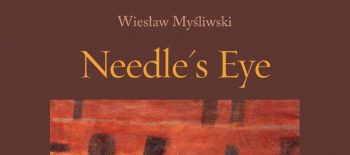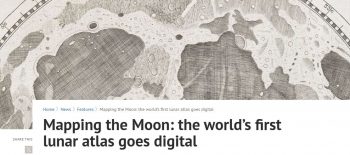William Morris Gallery and National Museum in Kraków (NMK), in association with Lund Humphries and the Polish Cultural Institute, London, are pleased to announce a major new publication, Young Poland: The Polish Arts and Crafts Movement, 1890 – 1918. This ground-breaking study is the first book in any language to explore the Young Poland (Młoda Polska)
period in the context of the international Arts and Crafts movements. Edited by art historians Julia Griffin and Andrzej Szczerski – who uniquely combine expertise in Polish and British designthe book will be published in November 2020 ahead of a major exhibition on the subject at William Morris Gallery in Autumn 2021.
The project is co-financed by the Minister of Culture and National Heritage within the framework of the Inspiring Culture Programme.
The Young Poland movement emerged in the 1890s in response to the country’s non-existence for almost a century. From the end of the 18th-century Poland underwent successive partitions dividing the country between Russia, Austria and Prussia, resulting in the country disappearing
from the map of Europe for 123 years. In the words of historian Norman Davies, Poland became “just an idea – a memory from the past or a hope for the future”. With the failure of military uprisings, culture became a means to preserve an endangered national identity.
The movement originated under the more liberal Austrian partition (known as Galicia), namely in Kraków and the nearby village of Zakopane (in the Tatra Mountains), and soon spread across the nation. It embraced an unprecedented flourishing of applied arts and the revival of crafts,
drawing inspiration from nature, history, peasant traditions and craftsmanship to convey patriotic values.
This pioneering and lavishly illustrated publication charts the rich history of the artists, designers and craftspeople whose schemes came to define Young Poland, including over 250 illustrations of ceramics, furniture, textiles, paper cuttings, wood carvings, tableware, stained glass, book
arts, children’s toys and Christmas decorations as well as domestic, church and civic interior decoration schemes.
The book argues that Young Poland shared fundamental parallels with the British Arts and Crafts movement, and that it was specifically this Arts and Crafts ethos which fuelled the movement’s patriotic ideology and the nation’s quest to regain Polish independence. While the diverse visual
language of Young Poland was created autonomously, in search of a distinctive cultural style and identity, it simultaneously looked outwards to the rest of Europe including British influences, notably the Pre-Raphaelites and the vision of John Ruskin and William Morris. In fact, as the book reveals, there was a cultural exchange between both nations: in 1848 the members of the newly-founded Pre-Raphaelite Brotherhood included the Polish fighter for freedom, Tadeusz Kościuszko, on their list of ‘Immortals’ (inspirational heroes).
Among key figures of the Young Poland movement, Stanisław Wyspiański (1869 – 1907) can most closely be considered a counterpart to William Morris. Nature and history were key subjects for both reformers and crucially, they shared firm belief in the equality of fine and decorative arts.
Like Morris, Wyspiański was a polymath whose prolific output included wall paintings, decorative patterns, stage sets, textiles, stained glass, book arts, church and domestic interior decoration, as well as achieving acclaim for his writing. Wyspiański was also instrumental in the foundation of the Polish Applied Arts Society in 1901, the equivalent of the Arts and Crafts Exhibition Society which raised the status of the decorative arts in Britain. Both men were also early champions of the preservation of historic buildings.
Young Poland also gave rise to the Zakopane Style of architecture and interior decoration which drew on the vernacular building techniques and traditions of local people who lived in the foothills of the Tatra Mountains. Zakopane Style founder Stanisław Witkiewicz believed that these traditions were the essence of “Polishness”. While the style developed before he became aware of John Ruskin and William Morris, Witkiewicz later said that his work had unknowingly fulfilled the theories of these British reformers. In 1899, Witkiewicz corresponded with Ruskin, sending
him photographs of Zakopane Style projects; Ruskin replied appreciatively and regretted that his advanced age prevented him from visiting Zakopane himself.
The book also explores in detail the work of lesser-known artists from the period, notably Karol Kłosowski and Maria Pawlikowska-Jasnorzewska, whose unique role in developing the Young Poland aesthetic has often been overlooked. Kłosowski was a prolific sculptor and woodcarver, painter, textile designer and paper cutter, whose Silent Villa (Willa Cicha) is a Zakopane Style Gesamtkunstwerk (total work of art) that epitomises the Arts and Crafts ethos and lifestyle. The polymath Pawlikowska-Jasnorzewska, famous for her lyrical poetry, was also a painter of bold
and intimate watercolours, often incorporating fantastic and macabre elements inspired by Polish folk traditions; the book explores this important aspect of her oeuvre for the first time.
Young Poland: The Polish Arts and Crafts Movement, 1890 – 1918 is edited by Young Poland Project Curators, Julia Griffin (William Morris Gallery) and Andrzej Szczerski (Director of the National Museum in Kraków). The book is the culmination of an international research project in partnership with the William Morris Gallery, National Museum in Kraków and Polish Cultural Institute in London, bringing together nineteen leading scholars in the field. A major exhibition, the first in the UK to explore the subject, will follow at the William Morris Gallery in October 2021. It will be curated by Julia Griffin, Andrzej Szczerski and Roisin Ingesby (Senior Curator, William Morris Gallery) The project is supported by the Polish Ministry of Culture and National Heritage as part its ‘Inspiring Culture’ programme. Young Poland: The Polish Arts and Crafts Movement, 1890 – 1918 is published by Lund Humphries and will be available in the UK from November 2020 and January 2021 in the USA.
Young Poland: The Polish Arts and Crafts Movement, 1890 – 1918
Edited by Julia Griffin and Andrzej Szczerski, 2020
Hardback £40.00
Dimensions: 26 x 22cm
240 pages | 250 colour illustrations



